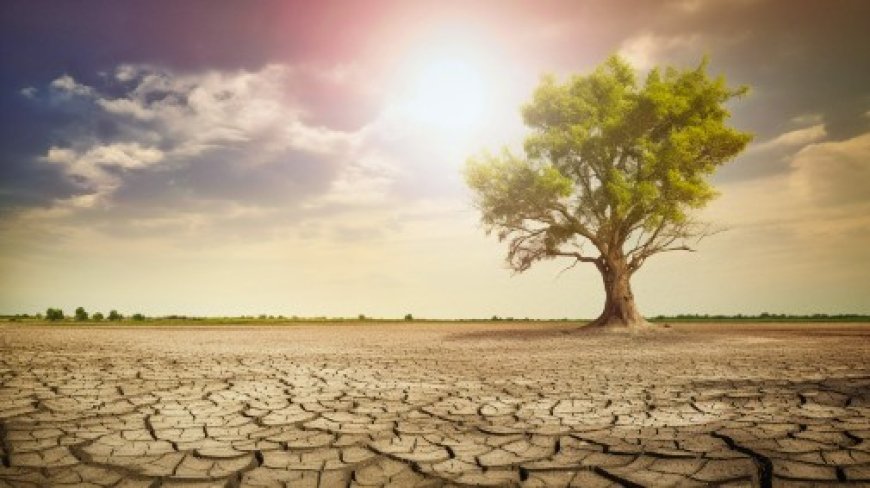York joins group of leading science institutes to launch £150 million venture fund tackling climate change and biodiversity loss
York joins group of leading science institutes to launch £150 million ... University of York

University of York and Greensphere Capital Launch £150 Million Fund to Address Climate Change and Biodiversity Loss
Introduction
Posted on 15 November 2023
Partnership with Gaia Sciences Innovation

The companies will benefit from access to leading-edge scientific expertise
Gaia Sciences Innovation will harness the expertise of 12 leading research institutions – including the University of York – to invest in start-up, spin-out and scale-up businesses that can help tackle biodiversity loss and climate change.
Scientific Expertise
These companies will then benefit from ongoing access to leading-edge scientific expertise in areas such as plant, fungal and animal sciences, ecology and hydrology, soil and microbiomes, and engineering biology.
Partnership Details
The partnership, based in York, Norwich and London, brings together leading British institutions that are home to more than 4,000 scientists, researchers and conservationists, including the University of York, Royal Botanic Gardens Kew, Zoological Society London, UK Centre for Ecology & Hydrology, and the Norwich Research Park innovation cluster that incorporates the UKRI Biotechnology and Biological Sciences Research Council, Earlham Institute, John Innes Centre, Norfolk and Norwich University Hospitals NHS Foundation Trust, Quadram Institute, The Sainsbury Laboratory, and the University of East Anglia.
Evidence-led Approach
The arrangement will see partner organisations benefit from new spin-outs through profit share (through co-ownership) and licence fees which allows organisations to fund future research and further build their organisational capacity. The spin-out companies will also provide a virtuous loop of valuable data from operating environments for scientists to refine and improve intellectual property.
Divya Seshamani, Managing Partner at Greensphere Capital, said: “In the face of the global climate and biodiversity crisis, we urgently need more investment into solutions based on the best available science. Mitigating these real risks requires evidence-led, science-based solutions, not anecdotes and spin.
“Britain is home to many of the world’s best bioscience researchers, but the commercial potential in their breakthroughs is too often being overlooked. We want to unlock a pipeline of exciting ventures that are based on brilliant ideas, that operate with scientific integrity, that are grounded in a contextual understanding of the complex natural systems and are alert to the risks of unforeseen consequences.”
Commitment to Sustainable Future
University of York Vice-Chancellor, Professor Charlie Jeffery, said: “We have some of the best researchers working on solutions to many of society’s most challenging environmental issues. This vital collaboration highlights the University’s commitment to creating a fairer and more sustainable future for all by harnessing knowledge from our discovery-led research to provide innovative solutions in the global fight against climate change and biodiversity loss.”
Focus Areas of the Fund
- Greening real assets: making agriculture and forestry more sustainable and enhancing or restoring land and water-based ecosystems, with applications such as natural pest control, green fertiliser and products that enhance soil health, afforestation and habitat restoration advisory, enhanced carbon dioxide sequestration, and improved watershed management.
- Green fintech: providing technology and expertise that can underpin and unlock green financial markets. This includes technologies to measure, monitor and verify biodiversity and climate impacts, including technologies for environmental DNA collection and sequencing, sensors for tracking water and soil health, computational genetics, and AI for assessing climate and nature-related risks.
- Human supply-chain resilience: investing in solutions that improve the resilience of human supply chains (from food to medicine) and ease pressures on ecosystems or adapt to changing conditions, for example through climate-resilient food crops, developing alternatives that displace drivers of deforestation such as meat, dairy and palm oil, and using plants for drug discovery or producing bioactive compounds.
Importance of Addressing Biodiversity Loss
In December 2022, international governments agreed the Kunming-Montreal global biodiversity framework with a goal of halting biodiversity loss by 2030, protecting 30% of the planet for nature.
According to the World Economic Forum, $44 trillion of global economic value is moderately or highly dependent on nature and its services, making up over half of global GDP.
Since 1970, there has been a 68% decline in animal life on Earth and it is predicted that by 2050 1 million species are on course for extinction.
Further Information
About Greensphere Capital
Greensphere Capital was founded in 2011 to invest in sustainable technology, companies and projects that help to mitigate the dual crises of climate change and biodiversity loss. As the first fund manager to the UK Government’s Green Investment Bank, a mandate it won in 2012 against 23 other British and European fund managers, it has grown green and sustainable businesses in some of the most challenging social and economic environments for over a decade over two successive funds.
York Spin Out Company
Earthbound Scientific was spun out of the Department of Biology at the University of York in 2020. Scientists design and manufacture technologies for the continuous monitoring of greenhouse gas emissions for researchers and land managers around the world who need to better understand how to manage our soils and plants.
Earthbound Scientific is not connected to the Greensphere Capital initiative, but is an example of how it might work.
Explore more news
SDGs, Targets, and Indicators
-
SDG 13: Climate Action
- Target 13.1: Strengthen resilience and adaptive capacity to climate-related hazards and natural disasters
- Target 13.2: Integrate climate change measures into national policies, strategies, and planning
- Target 13.3: Improve education, awareness-raising, and human and institutional capacity on climate change mitigation, adaptation, impact reduction, and early warning
- Target 13.a: Implement the commitment undertaken by developed-country parties to the United Nations Framework Convention on Climate Change to a goal of mobilizing jointly $100 billion annually by 2020 from all sources to address the needs of developing countries in the context of meaningful mitigation actions and transparency on implementation and fully operationalize the Green Climate Fund through its capitalization as soon as possible
- Indicator 13.1.1: Number of deaths, missing persons, and directly affected persons attributed to disasters per 100,000 population
- Indicator 13.2.1: Number of countries that have communicated the establishment or operationalization of an integrated policy/strategy/plan which increases their ability to adapt to the adverse impacts of climate change, and foster climate resilience and low greenhouse gas emissions development in a manner that does not threaten food production
- Indicator 13.3.1: Number of countries that have integrated mitigation, adaptation, impact reduction, and early warning into primary, secondary, and tertiary curricula
-
SDG 15: Life on Land
- Target 15.1: By 2020, ensure the conservation, restoration, and sustainable use of terrestrial and inland freshwater ecosystems and their services, in particular forests, wetlands, mountains, and drylands, in line with obligations under international agreements
- Target 15.2: By 2020, promote the implementation of sustainable management of all types of forests, halt deforestation, restore degraded forests, and substantially increase afforestation and reforestation globally
- Target 15.5: Take urgent and significant action to reduce the degradation of natural habitats, halt the loss of biodiversity, and protect and prevent the extinction of threatened species
- Indicator 15.1.1: Forest area as a proportion of total land area
- Indicator 15.2.1: Progress towards sustainable forest management
- Indicator 15.5.1: Red List Index
Table: SDGs, Targets, and Indicators
| SDGs | Targets | Indicators |
|---|---|---|
| SDG 13: Climate Action |
|
|
| SDG 15: Life on Land |
|
|
Analysis
-
SDG 13: Climate Action
The article highlights the partnership between the University of York and Greensphere Capital to invest in businesses that tackle climate change. This addresses the goal of SDG 13 to take urgent action to combat climate change and its impacts.
The targets under SDG 13 that can be identified based on the article’s content are:
- Target 13.1: Strengthen resilience and adaptive capacity to climate-related hazards and natural disasters
- Target 13.2: Integrate climate change measures into national policies, strategies, and planning
- Target 13.3: Improve education, awareness-raising, and human and institutional capacity on climate change mitigation, adaptation, impact reduction
Behold! This splendid article springs forth from the wellspring of knowledge, shaped by a wondrous proprietary AI technology that delved into a vast ocean of data, illuminating the path towards the Sustainable Development Goals. Remember that all rights are reserved by SDG Investors LLC, empowering us to champion progress together.
Source: york.ac.uk

Join us, as fellow seekers of change, on a transformative journey at https://sdgtalks.ai/welcome, where you can become a member and actively contribute to shaping a brighter future.







